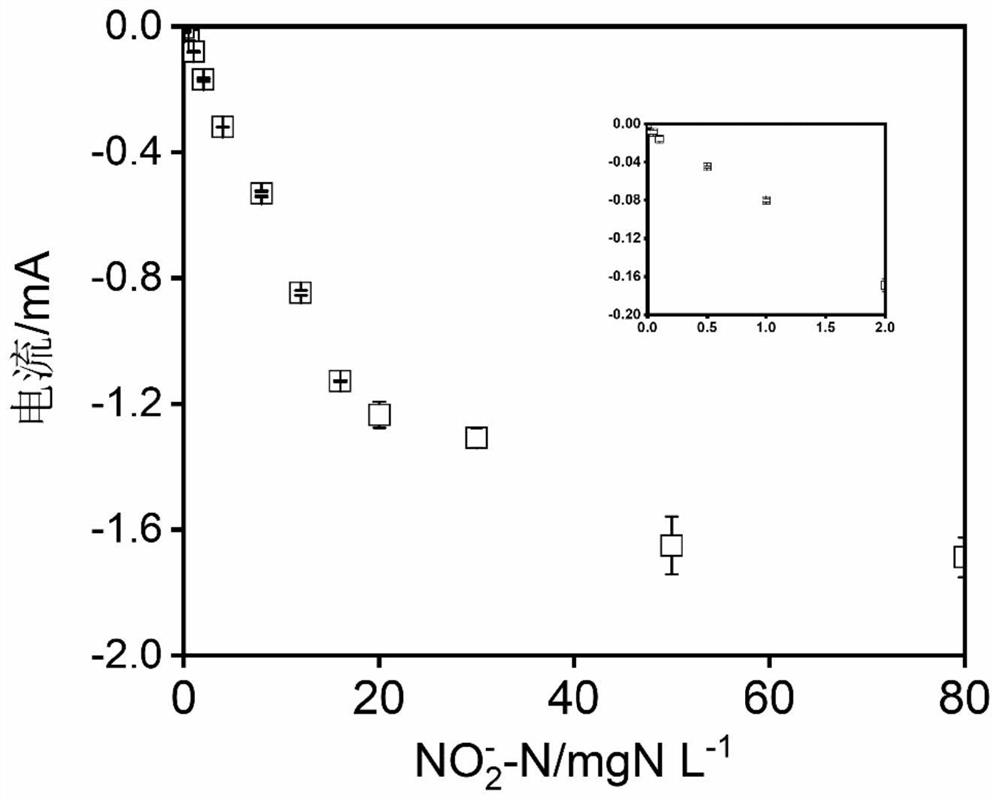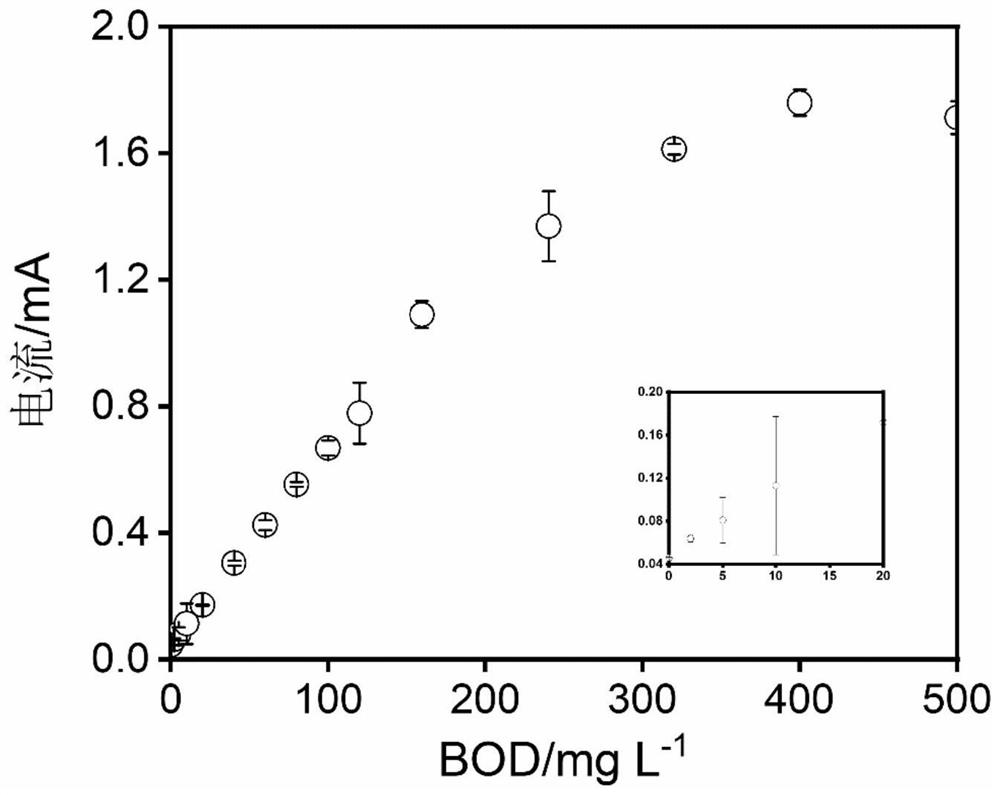A Bioelectrochemical Method for Simultaneous Detection of Nitrite and Biochemical Oxygen Demand
A technology of bioelectrochemistry and nitrite, which is applied in the field of bioelectrochemistry to simultaneously detect nitrite and biochemical oxygen demand, can solve the problem of high detection cost, achieve the effect of improving accuracy and reducing device cost
- Summary
- Abstract
- Description
- Claims
- Application Information
AI Technical Summary
Problems solved by technology
Method used
Image
Examples
Embodiment 1
[0070] Using the sludge water of the anoxic section of the sewage plant as the inoculum, the bioelectrode for the bidirectional detector was cultivated in the MFC mode (ie, the microbial fuel cell mode):
[0071] The resistor 18 is connected externally to the bioelectrochemical reactor, and the loop is connected with a copper wire. The bioelectrochemical reactor was inoculated with sludge water in the anoxic section. The inoculation process lasted for five days, and then it was transferred to the sequencing batch mode for cultivation, and the matrix solution was changed every day. The voltage of the MFC was recorded by a digital data collection instrument (KEYSIGHT model 34970A).
[0072] Specifically: the bioelectrode 12 in the bioelectrochemical reactor is used as the anode, the non-biological electrode 13 is used as the cathode, the external resistor 18 and the copper wire form a loop, such as Pic 4-1 As shown, the bioelectrochemical reactor is operated in closed circuit ...
Embodiment 2
[0077] The bioelectrode is tested in different solutions, and the most suitable BOD and nitrite detection potentials are selected according to the test results during the potential step chronoamperometry test:
[0078] The bioelectrochemical reactor is connected with a potentiostat 19 in a three-electrode system to construct a bioelectrochemical sensor, wherein a graphite electrode (bioelectrode), a foamed nickel air electrode and a silver / silver chloride electrode are used as working electrodes, respectively, Counter and reference electrodes. The bioelectrodes were placed in 50mM PBS, and 100mg BOD L was added. -1 sodium acetate in 50 mM PBS, and add 20 mg NO 2 - -NL -1 CV tests were performed in 50 mM PBS with nitrite. The scanning range of CV is -0.6V~-0.1V(vs.Ag / AgCl), and the scanning speed is 0.5mV s -1 . Among them, in the subsequent test process of the constructed bioelectrochemical sensor (including the test of the solution containing a single pollutant and the ...
Embodiment 3
[0081] Potential step chronoamperometry is performed on the bioelectrode in solutions containing different nitrite concentrations and solutions with different BOD concentrations, and the signal output time point is selected according to the test results:
[0082] The bioelectrochemical reactor was connected with a potentiostat in a three-electrode system, graphite electrode (bioelectrode), foamed nickel air electrode and silver / silver chloride electrode were used as working electrode, counter electrode and reference electrode, respectively. by adding 12.5mL -1 Trace Minerals and 5mL L -1 The standard nitrite-containing solution was prepared by adding nitrite to 50mM PBS of vitamins, and the concentration of the standard nitrite solution was set to 2mgNO respectively. 2 - -N L -1 ,4mgNO 2 - -N L -1 ,8mgNO 2 - -N L -1 , 12mgNO 2 - -N L -1 and 16mgNO 2 - -N L -1 . by adding 12.5mL L -1 Trace Minerals and 5mL L -1 The standard BOD-containing solution was prepared...
PUM
| Property | Measurement | Unit |
|---|---|---|
| length | aaaaa | aaaaa |
| volume | aaaaa | aaaaa |
| length | aaaaa | aaaaa |
Abstract
Description
Claims
Application Information
 Login to View More
Login to View More - R&D
- Intellectual Property
- Life Sciences
- Materials
- Tech Scout
- Unparalleled Data Quality
- Higher Quality Content
- 60% Fewer Hallucinations
Browse by: Latest US Patents, China's latest patents, Technical Efficacy Thesaurus, Application Domain, Technology Topic, Popular Technical Reports.
© 2025 PatSnap. All rights reserved.Legal|Privacy policy|Modern Slavery Act Transparency Statement|Sitemap|About US| Contact US: help@patsnap.com



